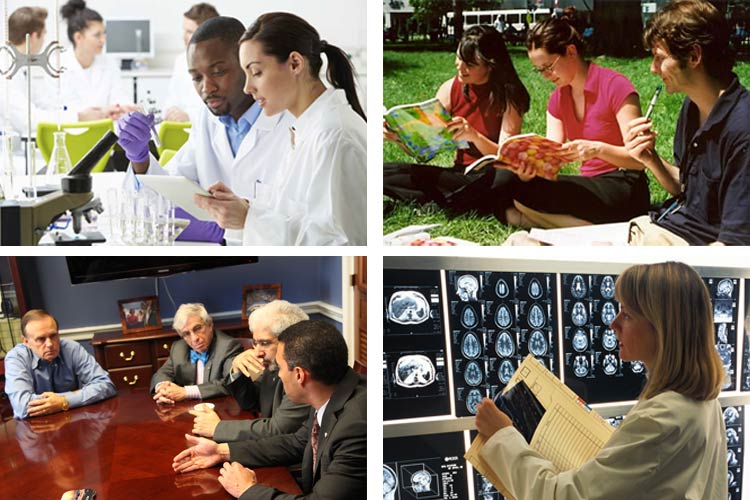
Message From the President: The Promise of BRAIN

Just over two years ago, President Barack Obama made a remarkable commitment to our field when he announced the Brain Research through Advancing Innovative Neurotechnologies (BRAIN) Initiative, pledging millions of federal dollars to support the development of new tools and technologies to study the brain. The announcement promised a bold approach to equip neuroscientists with new tools and important information that could not readily be gained through traditional grant making.
For example, neuroscientists might finally have a census and characterization of the many diverse cell types in the brains of model organisms and perhaps humans as well. Systematic characterization of neurons and glia is a prerequisite to mapping the wiring of the brain and to understanding perturbations that might lead to disease. Neuroscientists might also gain the ability to simultaneously record from a greater number of brain cells than ever before. The Defense Advanced Research Projects Agency (DARPA) committed to advancing research into disorders of memory resulting from brain injury and neuropsychiatric disorders by developing better electrodes to both stimulate and record from the human brain.
Many colleagues were initially skeptical that realistic goals for the BRAIN Initiative could be set. In comparison with the Human Genome Project, which had a clear and focused goal, BRAIN was faced with a myriad of challenges for tool building, new approaches to scientific investigation, and the creation of datasets that could benefit the entire field. There was also concern that a new initiative would come at the expense of other research priorities at a time of limited federal resources.
However, two years later, the transformative potential for this ambitious project is beginning to come into view.
Plan for Investment
To ensure a strong scientific foundation for the BRAIN initiative, NIH Director Francis Collins appointed a 15-member working group. Working group co-chairs Cori Bargmann and Bill Newsome led an effort to gather input from the scientific community, patient groups, and the public before recommending a plan that set realistic scientific priorities and funding goals for the project. Their report, “BRAIN 2025: A Scientific Vision,” recommended a focus on the basic science of circuits and networks to solve fundamental problems in neuroscience. They identified five target areas: perception, emotion and motivation, cognition, learning and memory, and action. The first five-year phase of investment would go toward the development of tools and technologies, with a second five-year investment emphasizing discovery-driven science using those tools.
As a scientist, I am enthusiastic about the trajectory that BRAIN is taking. By prioritizing basic science and the creation of tools and data sets that will broadly benefit the field, BRAIN is already strengthening all of neuroscience. In implementing its report, the NIH leadership avoided the pitfall of creating a monolithic top-down project by eliciting very strong proposals from intellectually diverse investigators.
Developing New Technologies
The initial wave of BRAIN-funded research is charting a course for important developments. Carlos Brody and his colleagues at Princeton University focused their research on the neural circuit dynamics that underlie working memory in mice, as it relates to decision-making. As described in their recent paper in Nature, they used optogenetics to show how frontal orienting fields impact decision-making behavior, creating a picture of the brain in action as it makes complex decisions. Their work aligns with the BRAIN goal of understanding patterns of neural activity related to mental experience and behavior.
Bryan Roth and his colleagues at the University of North Carolina developed technology that allows researchers to turn neuronal activity on and off in multiple cell types simultaneously. Building on the Designer Receptors Exclusively Activated by Designer Drugs (DREADD) technology that Roth developed in 2007, this second generation of the tool allowed the team to target neuronal populations with a chemical-genetic remote control for brain circuitry and behavior. Researchers modulated neuronal firing to increase locomotor activity and control feeding behavior in mice. Published in Neuron in May, this research could provide insight into disorders such as schizophrenia and addiction.
Other technologies funded through BRAIN have made an impact over the past year. Two-photon microscopy of the mouse brain has generated images of activity in nerve cells, dendrites, and synapses, allowing scientists to more precisely examine single neurons and signaling in the brain. Photoacoustic microscopy has provided three-dimensional high-resolution, high-speed imaging of a mouse brain.
These technological developments share a common theme, and one that is central to BRAIN: All have involved interdisciplinary collaborations across scientific fields. Engineers, biologists, chemists, physicists, and others have worked together to build new systems and processes to advance our understanding of the brain. These have been bottom-up enterprises that bring together the best and brightest minds in science and allow them to develop and share tools. BRAIN has provided an unprecedented opportunity for the field to work collaboratively across disciplines to move science forward.
BRAIN Next Steps
The tools developed in this first phase of the initiative are meant to serve as a first step. As they are made widely available, they will provide a foundation not only for basic science but also for investigations that may ultimately identify new therapies for neurological and psychiatric disorders.
A major concern is no longer whether BRAIN will be important for the field — it is already proving to be so — but whether the funding provided by Congress will match the need projected by the working group. Funding is already falling behind need, even though BRAIN is a very small portion of the NIH budget.
It is up to us, as scientists, to actively ensure BRAIN’s success by embracing the mission, communicating support when we speak with public audiences around the country, and advocating for continued funding. These efforts are crucial to ensuring continued support not only for investment in the future of BRAIN, but for neuroscience research funding writ large. We can appreciate that the early discovery phase of BRAIN will allow the second phase to leverage economies of scale to produce better, cheaper, and more widely accessible tools.
Funding will not come easy, particularly given the current environment in Congress. But we should all know that an investment in BRAIN can catalyze a new era of scientific research with the potential to move the field forward by leaps and bounds. It could also build a foundation for continued federal investment in basic research. Join me in working to ensure the success of this initiative and the promise of discovery it brings.


















